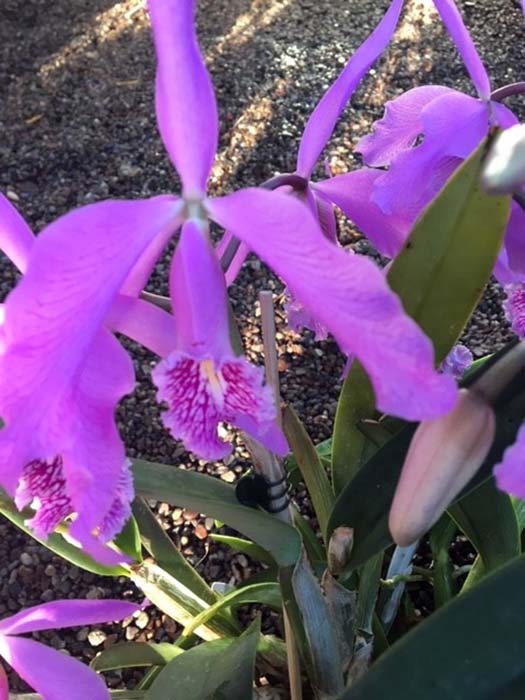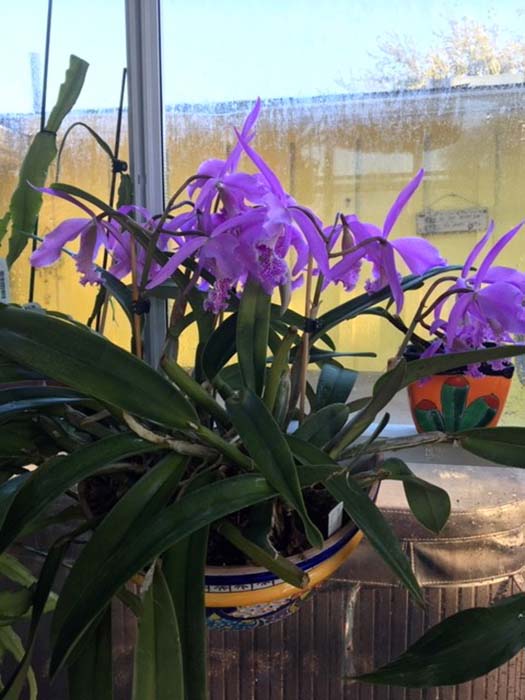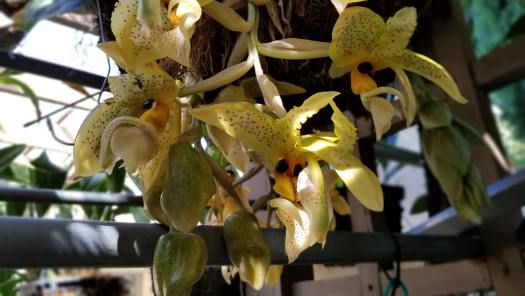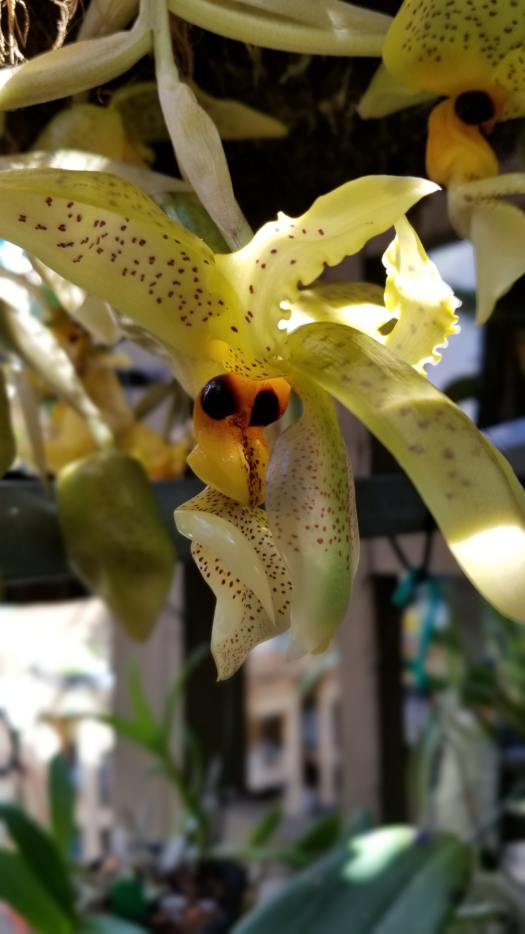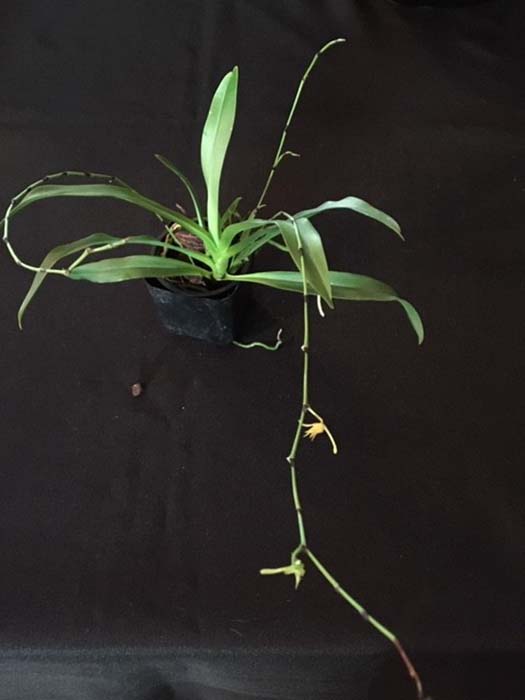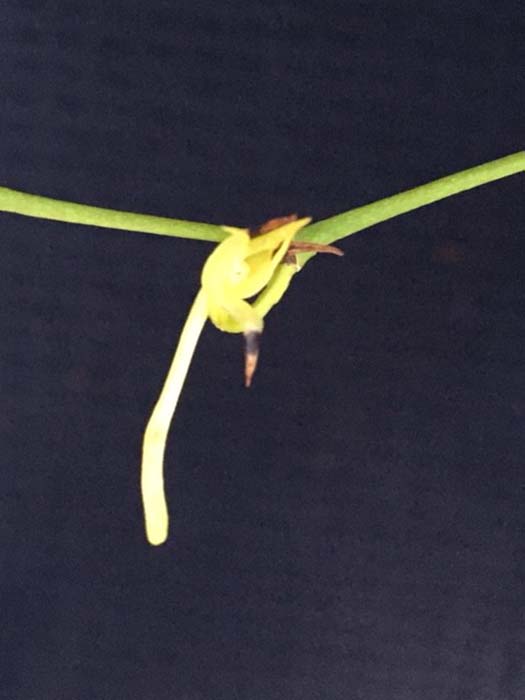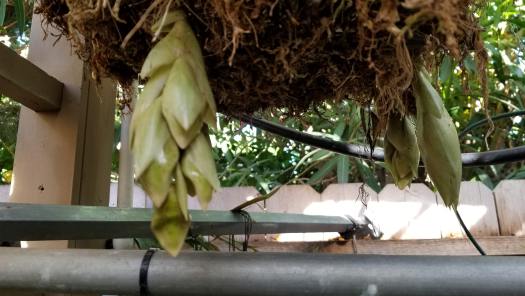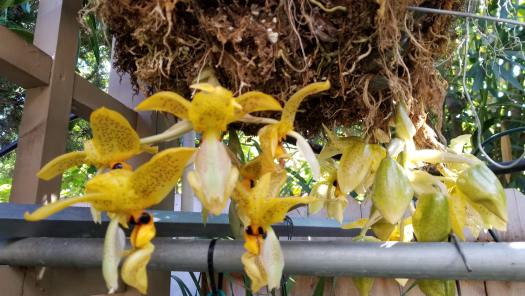From Scott McGregor:
|

Ceratochilus biglandulosus
A tiny miniature with long-lasting crystalline white flowers, relatively large for the plant.
It is mounted with scant moss over the roots, so does dry out on hot/dry days. I suspect water quality is critical for this one, more than temperature, humidity or constant moisture. I grow it fairly bright, like Fernandezia and D. cuthbertsonii. |
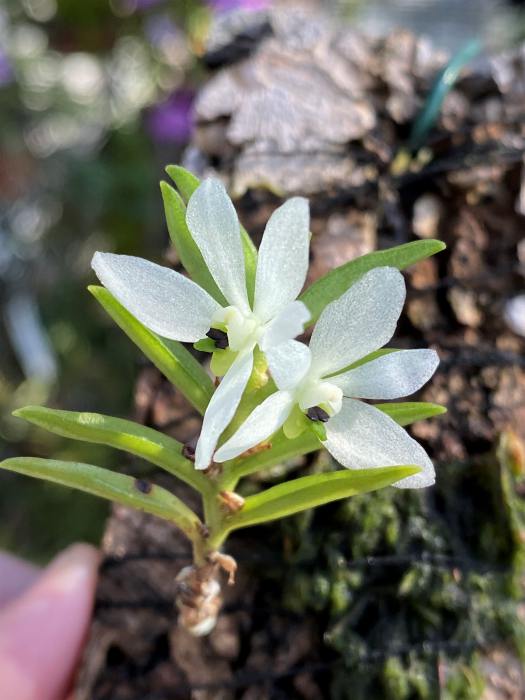 |
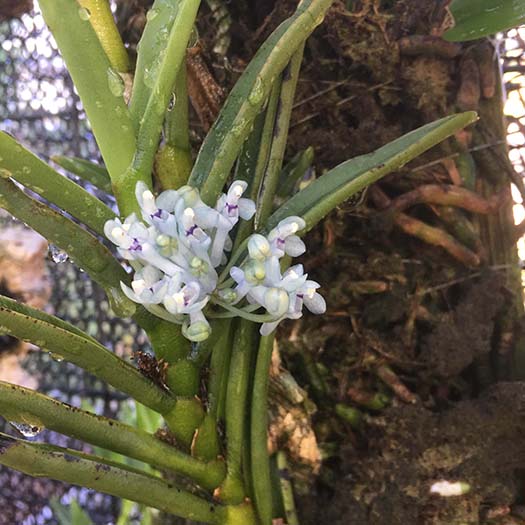
|
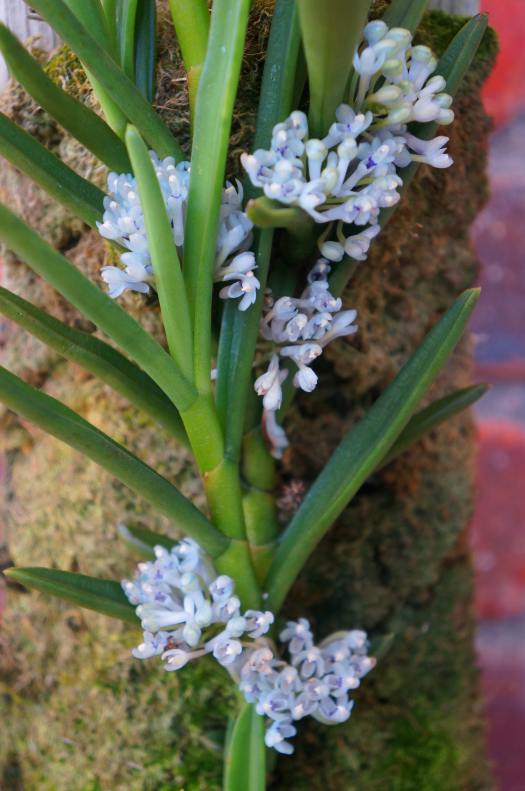
|
Cleisocentron gokusingii
One of the true (or nearly so) blue orchids, albeit a very light and slightly gray blue. There are two nearly identical species available-- Cleisocentron gokusingii has semi-terete leave and Cleisocentron merrillianum has terete leaves, but otherwise seemingly indistinguishable. Mine blooms 2-3 times per year with a handful of clusters and will occasionally flush bloom, which is quite a sight. The flowers are more deeply blue when it blooms during the cooler months. See photo on the right for a flush bloom during cooler weather. Beware of photoshopped pics on the internet that are intensely blue with oddly tinted backgrounds. |
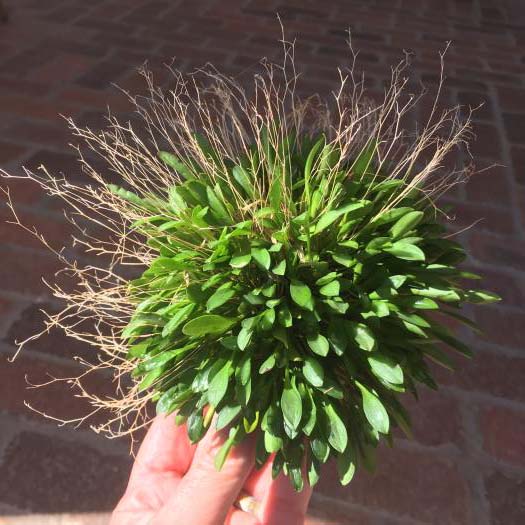 |
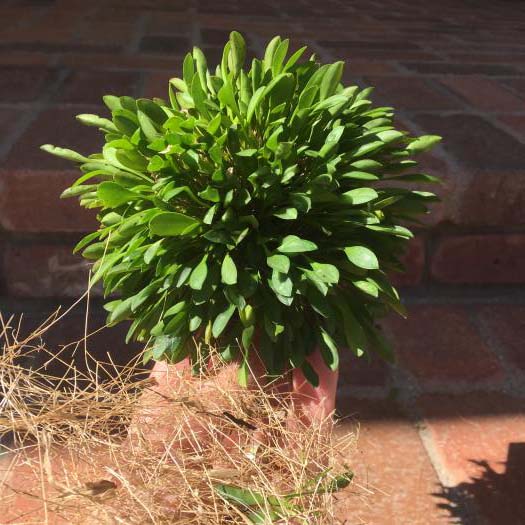 |
Pleurothallis grobyi Haircut
Here's a pic of bloom aftermath instead of flowers this time... Pleurothallis grobyii has small green flowers in the Spring and not much to look at as a small plant, but as a specimen it is quite a sight. The only problem is that all the small stems remain and detract from the next bloom. Normally that's not a problem with plants that have a few spikes, but what about hundreds? Every couple years, I perform a labor of love and cut all the old spikes off-- the first pic is just getting started and the second is all done. Only cut off a couple green leaves by mistake! |
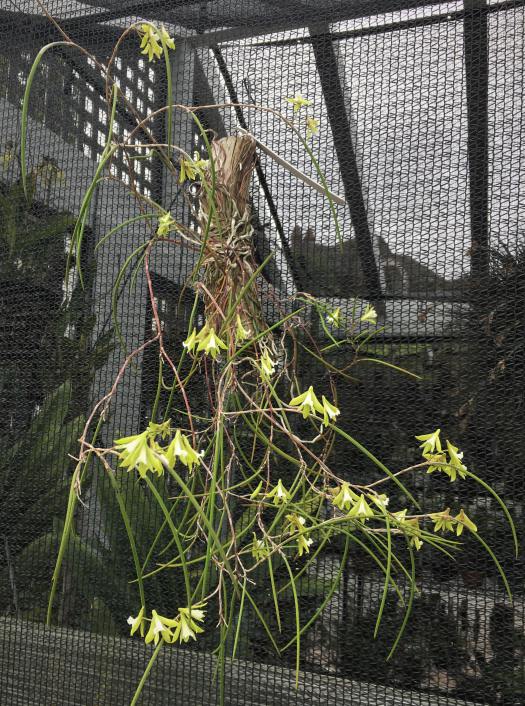
Dockrillia bowmanii (mortii)
This Australian species has long and thin terete leaves until Autumn when it flush blooms with 1” green and white flowers. The blooms are long-lasting and quite fragrant. The literature says this is a “hot” grower and needs a dry winter rest, but does very well for me outside and gets rained on all winter. |
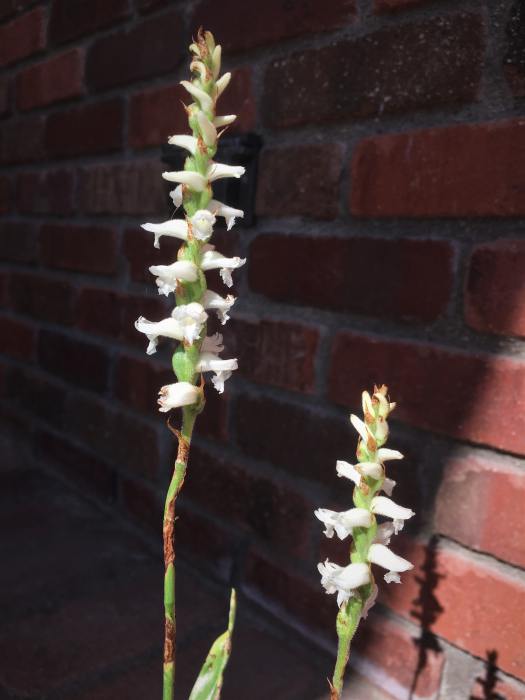
Spiranthes odorata 'Chadd's Ford'
Spiranthes odorata grows wild, broadly distributed across the US East Coast with the common name “Marsh Ladies Tresses”. This named clone has fewer but larger flowers than most wild clones, and they have a sweet fragrance as the species name would suggest. It reliably flowers in October. Easy to grow outdoors as a potted terrestrial; keep it moist/wet and give it Cattleya light levels. |
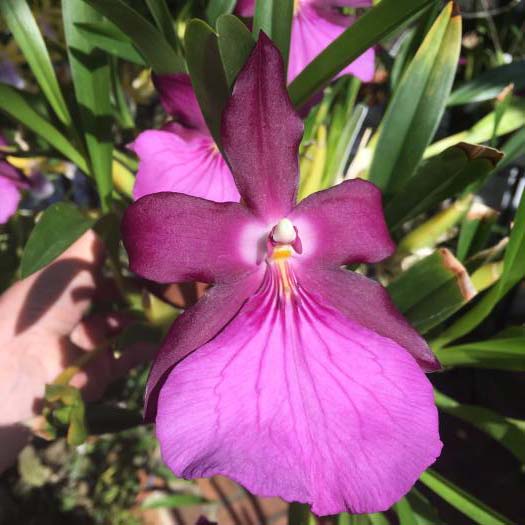 |
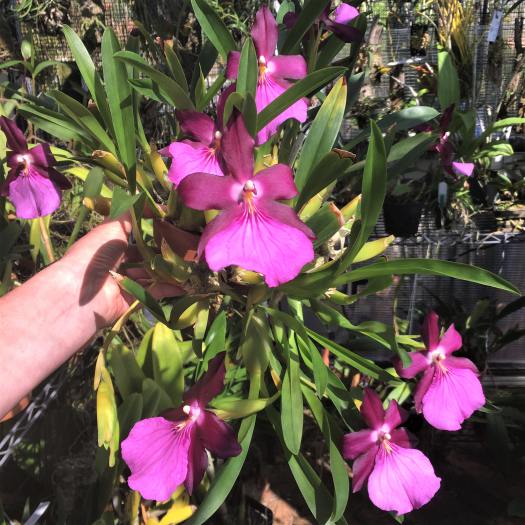
|
Miltonia moreliana (spectabilis var. moreliana)
This is one of my favorite species, reliably increasing in size and producing large, colorful, long-lasting, licorice-scented flowers every October. It does tend to ramble outside of the pot, so needs to either grow in a basket or plan to repot every 2 years.
It has been determined to be a separate species, rather than a variety of M. spectabilis |
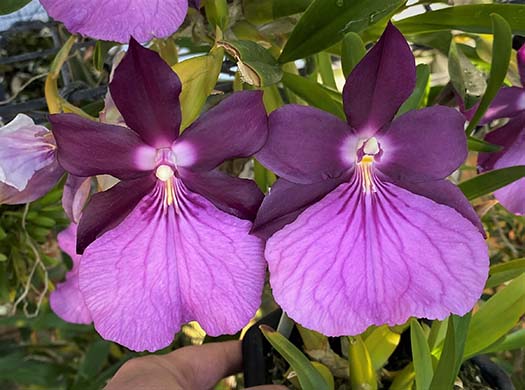 |
Miltonia moreliana variations
You can't have too many of these beautiful outdoor-growing species! Two plants in bloom, side by side-- the one on the left is a select but unnamed clone that is very floriferous and fast-growing (plant doubles in size each year). The one on the right has two awarded parents: Miltonia moreliana 'Jean' AM/AOS x moreliana 'Newberry' AM/AOS. |
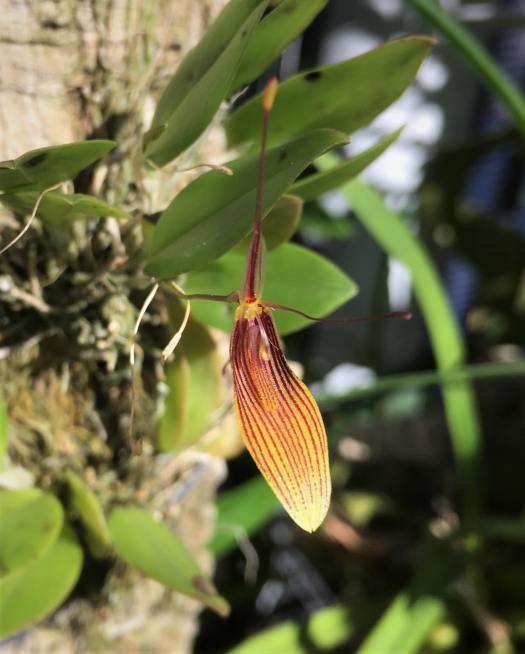
Restrepia brachypus v. striata |
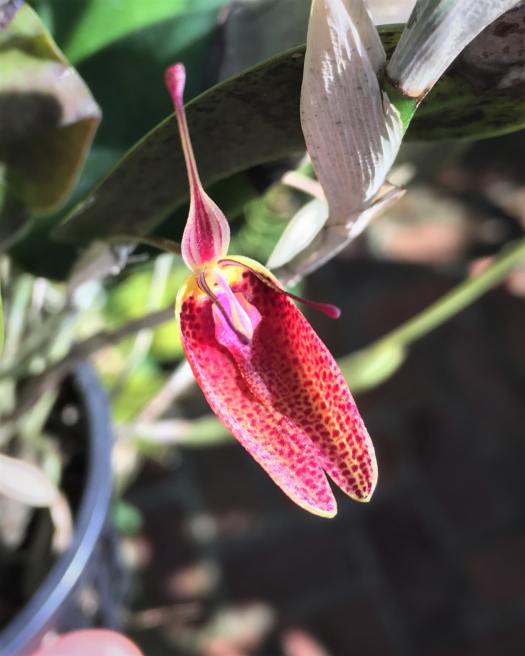 Restrepia pelyx (dark form) |
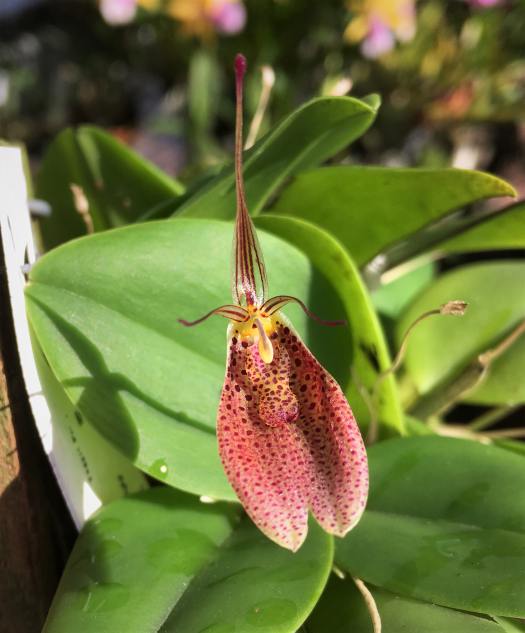 Restrepia contorta |
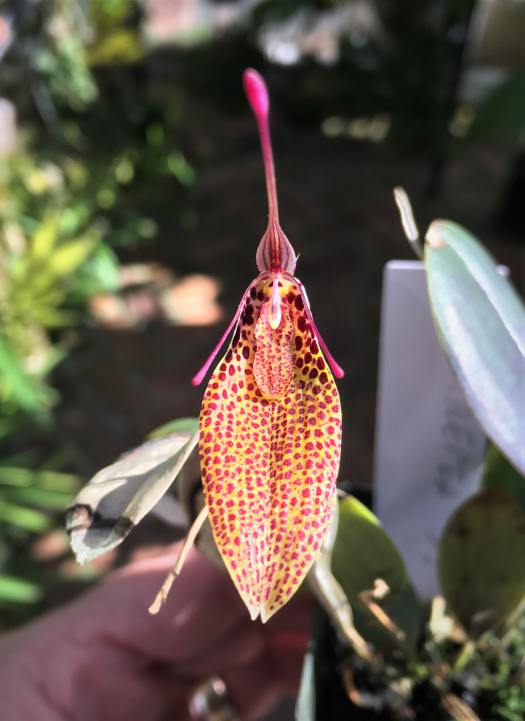 Restrepia sp. |
| With cooler nights, the Restrepias wake up. Many of these bloom throughout the cool season and have a wide variety of spotted and striped colorful butterfly-like flowers. They enjoy moist, shady and cool conditions, and best with R/O water. Pictured are R. pelyx “dark form”, R. contorta, R. brachypus v. striata, and an unidentified species (thanks Edie!) |
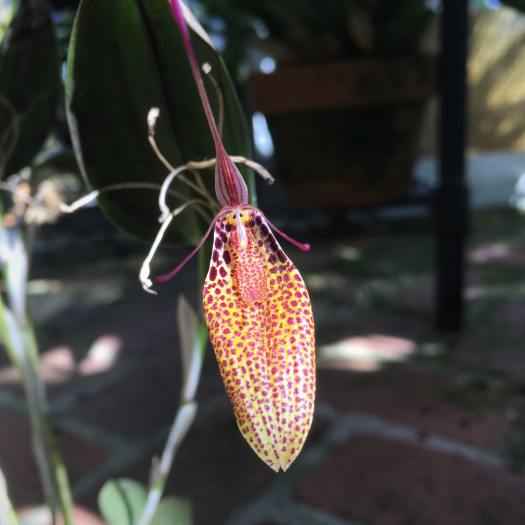
Restrepia antennifera
Have to check them often, I don’t always spot their flowers right away! |
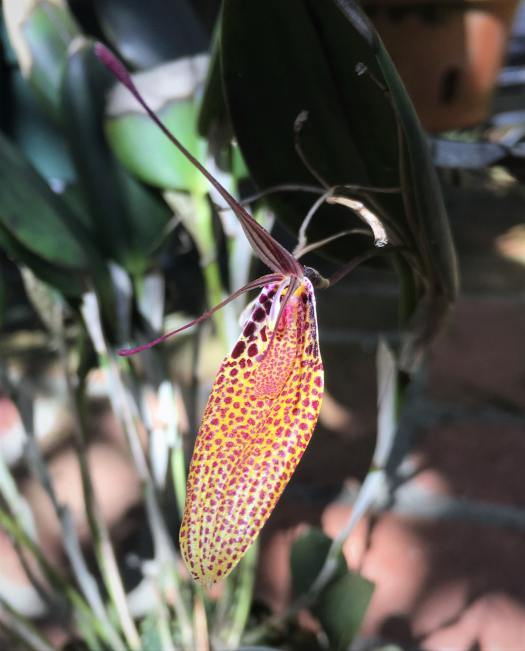 |
 2.JPG)
Sobralia sp. (not S. macra)
Labeled as Sobralia macra. I noticed something unusual on this Sobralia—note the two flowers at the top, but also the flower blooming from the bottom of the plant on a short, leafless spike. I’ve never seen a Sobralia bloom both off the top of the canes as well as with a leafless spike at the bottom. It has many of these bottom spikes. Andy Phillips has determined that this is a new species, as yet unidentified.
It is pretty and fragrant—too bad it only blooms for a few hours…It is quite compact, only about 18 inches tall. |
 4.JPG) |
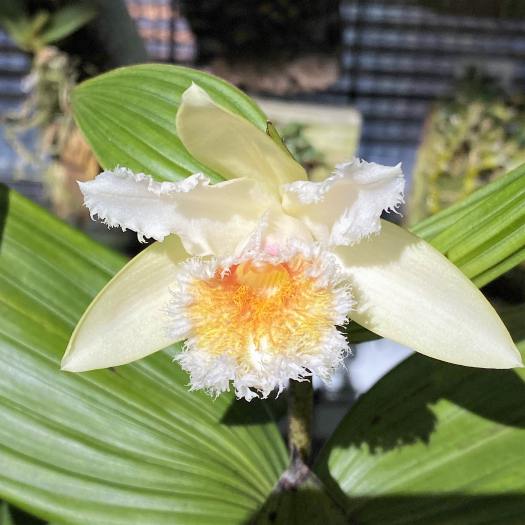
Sobralia fimbriata
Fringe to the max, and my vote for the most wonderful fragrance among orchid species. Sadly, the flowers only last a day, but reblooms a couple times per cane. One of the smaller Sobralia species—full grown at about 12-16” tall. I got mine as an import in 2014 and almost all the leaves promptly turned black and dropped off, but slowly came back after a couple years of sulking and seems quite happy now with multiple flowering canes..
|
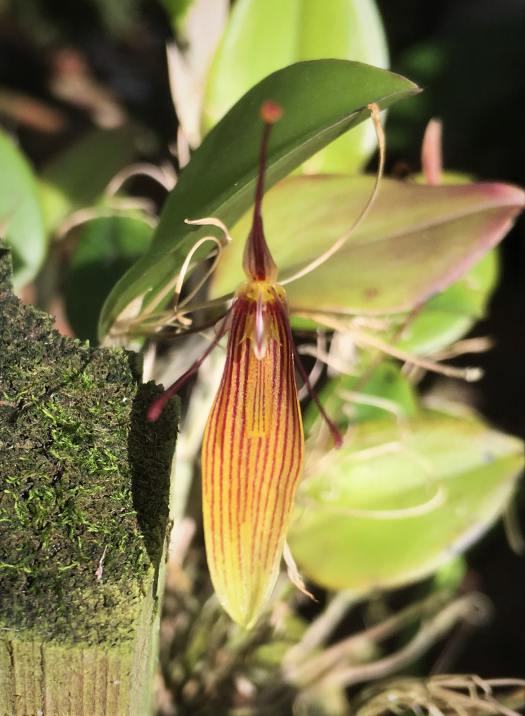
Restrepia trichoglossa
Yet another restrepia... |
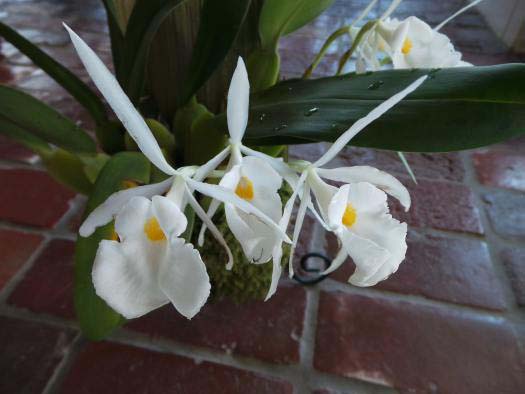
Trichopilia nobilis (fragrans)
A nicely fragrant cool grower. |
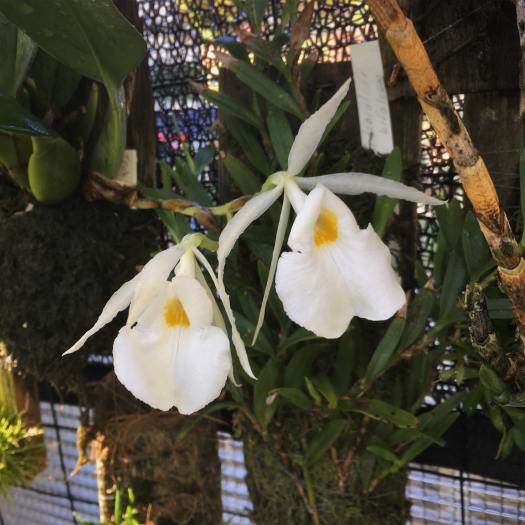 |
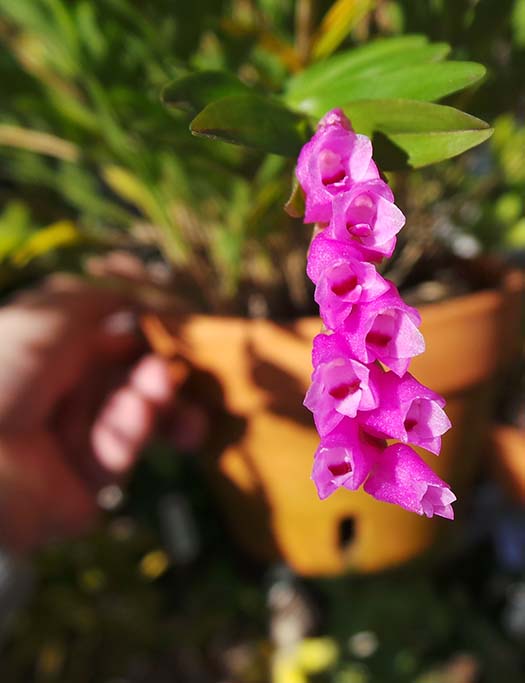 |
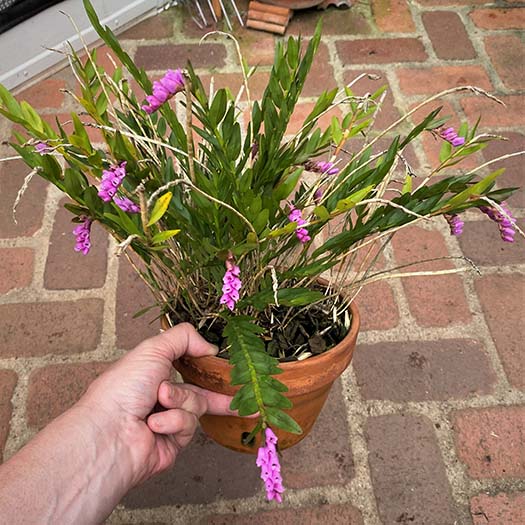
Isochilus sp. (Colombia)
A pretty unnamed species (designated “OZ”) from Colombia.
|
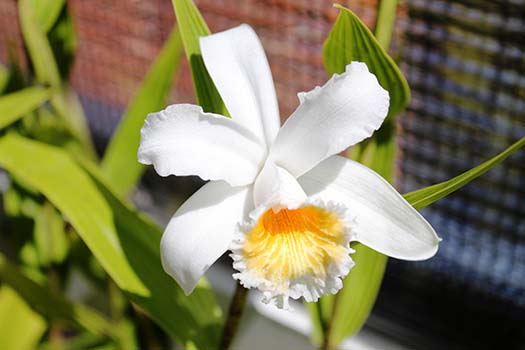
Sobralia yauperiensis
(aka
virginalis, violacea)
I’ve had this plant for over a decade and it is now in a 16” pot, neglected behind my orchid shade house, where it gets a few hours of direct morning sun. Like a number of other Sobralia species, it flush blooms with lots of flowers (14 today) all opening together. Sadly, these also all close later that same day. The “one-day wonder” Sobralias are often called the “ephemeral group”, and they make up for short-lived flowers by mass one-day beauty, and typically rebloom over the season. |
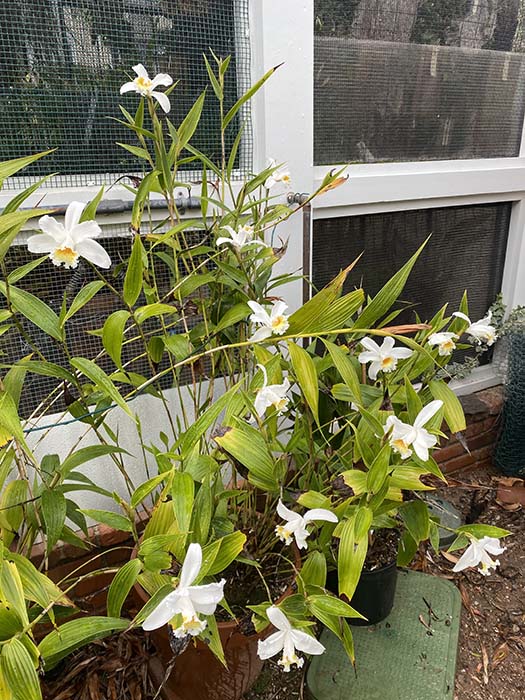 |
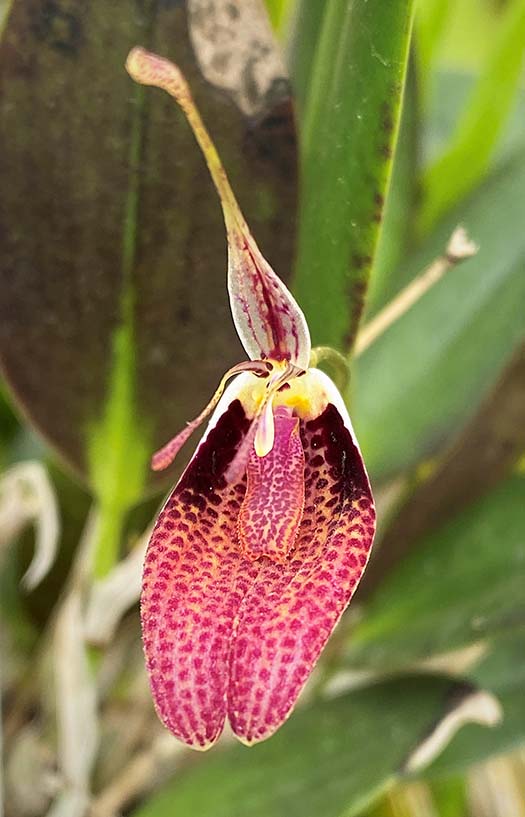 |
Restrepia sanguinea
Yet another Restrepia, this one named for the blood-red color in the flowers. There are both spotted and striped forms of this species. |
From Roberta Fox:
|
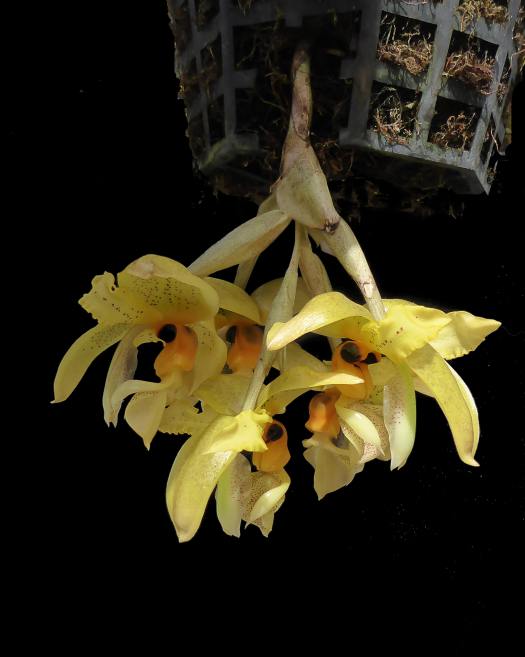 |
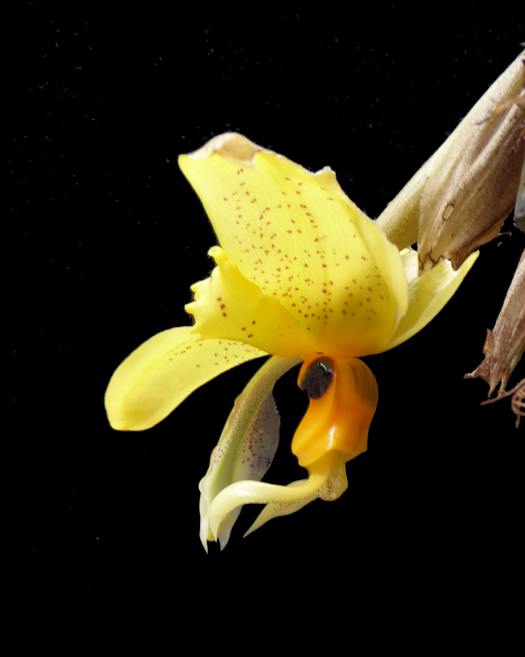 |
Stanhopea wardii
The first spike opened last month... sort of. It was nearly ready, when, to my horror, I found one flower substantially destroyed and the last one with a bite out of it. I found the culprit, a slug. (Note that this plant is hanging, not near a wall or other plants. I am convinced that slugs can fly...) That last flower opened, but wasn't quite complete. Fortunately, there was another spike on the way, and this is the one I share with you. Also, click on the photo on the right to see a real-time video of Stan. wardii opening a couple of years ago. (I set up a camcorder on a tripod when I could see that it was very close, and the flower obliged.) It is less than a minute and a half from bud to open flower, so watch to the end. Use your "back" button to get back to this site. Alas, there's no way to capture the burst of perfume when these flower pop open. |
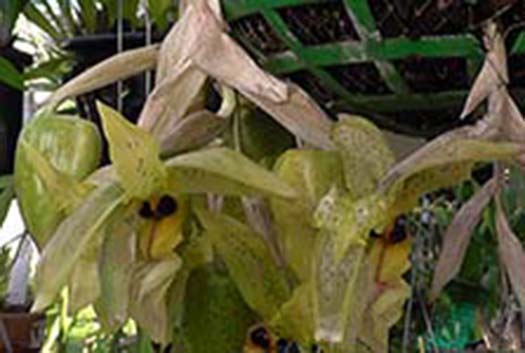 |
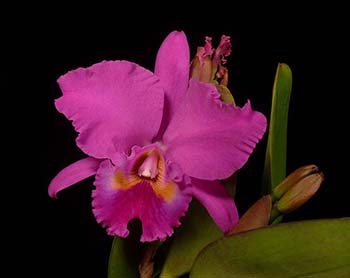 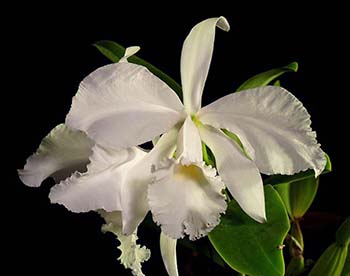 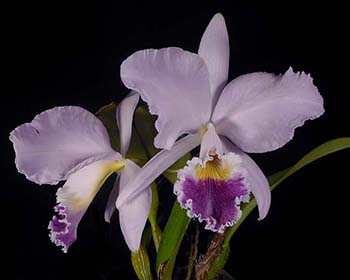
Cattleya labiata
Last month, Scott showed you "red", white and blue Dendrobium pavulum. How about Cattleya labiata rubra, alba, and coerulea? They all did bloom within one month, though not quite simultaneously enogh for a "family portrait". Of the three, the alba is the most floriferous (and the one I have had the longest), the rubra has the best form, the coerulea has very special color. I grow these under a polycarbonate cover to protect from cold winter rain, but they're otherwise fully exposed, and tolerate cool winter nights with no problem. |
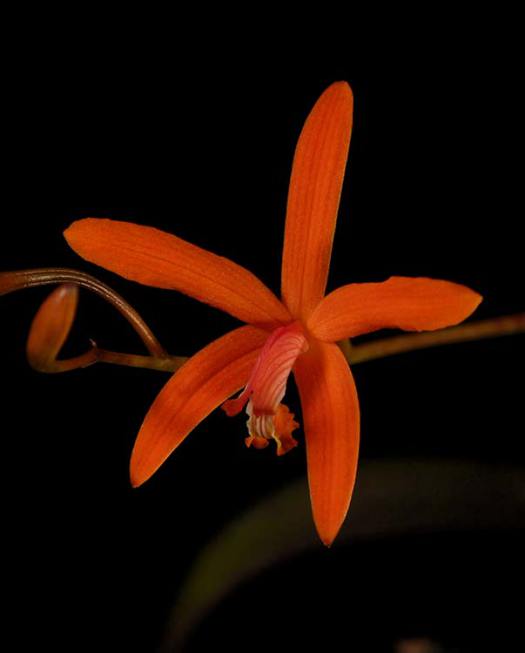
Laelia (Cattleya) sanguiloba
Another of my rupiculous Laelias to put on a show. The flowers last well over a month, and the plant produces multiple spikes. It grows in full sun, in a pot with mostly gravel, just a thin layer of potting soil in the root zone. In its Brazilian habitat, it grows with roots in the crevices of rocks, where there is moisture and plant detritus. |
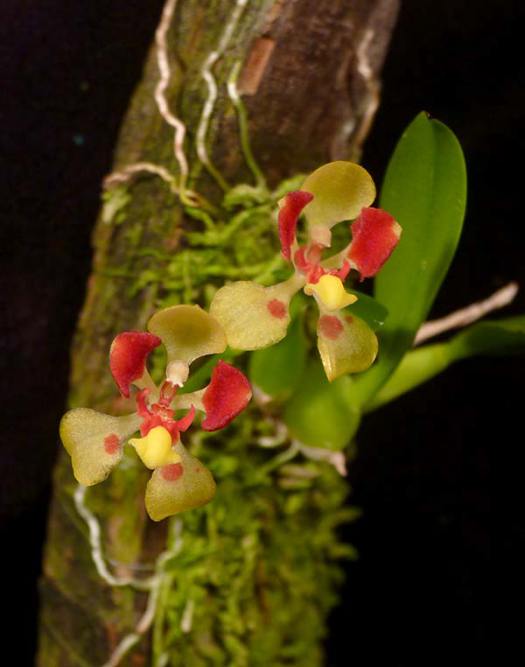
Oncidium coloratum (Gomesa colorata)
Grows shady, and as cool and damp as possible. |
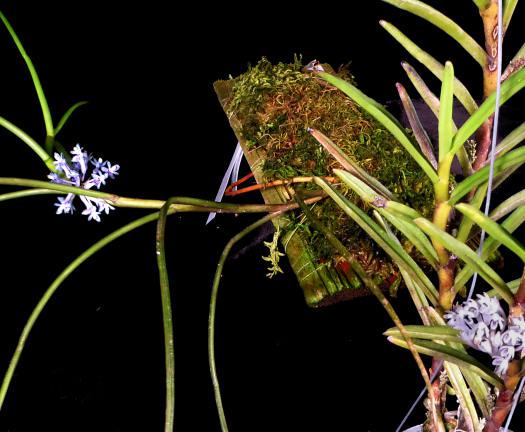
Cleisocentron merrillianum (left) and Cleisocentron gokusingii (right)
I recently got the Clctn. merrillianum so can't take credit for the flowers, but Clctn. gokusingii (which I have had for quite a few years) happens to be in bloom too. This photo is more about the plants than the flowers (see Scott's section for flowers). Clctn. gokusingii was sold as merrillianum for many years so it is useful to see both for comparison. C. gokusingii has much shorter leaves, which are semi-terete. C. merrillianum has very terete, long leaves. |
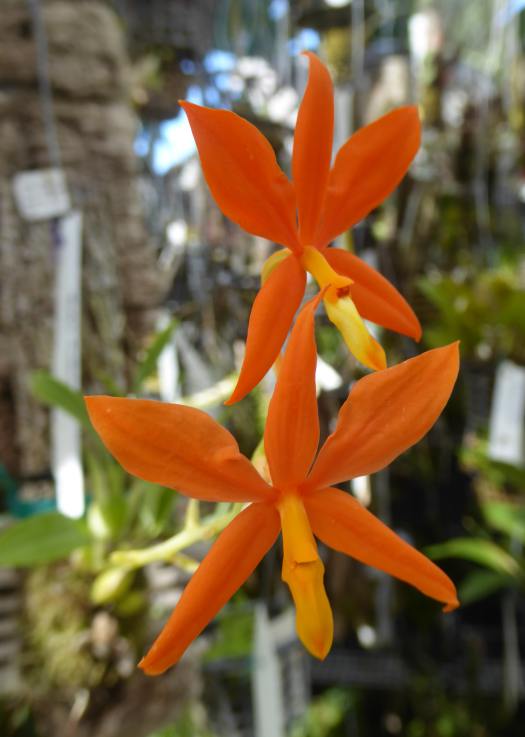
Encyclia vitellina
I showed photos of this plant in September, it had been in bloom since June. It's finally reaching the end of its bloom cycle for this year, so I thought that after 5 months of booming a farewell was in order. New growth is well established, so I am looking forward to seeing it again. |
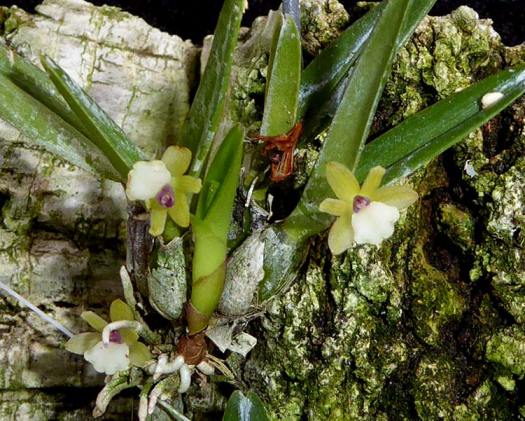
Scaphoglottis minutiflora
This little plant grows very vigorously. (Thanks, Jan Anderson!) Flowers are only about 1/4 inch so easy to miss if one isn't vigilant. I grow it in the shade. There is little or no moss on the mount, so it tolerates (and even enjoys) being on the dry side. It is a member of the Cattleya tribe. |
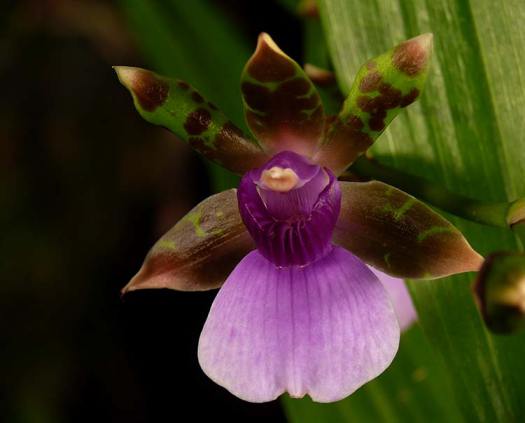
Zygopetalum maxillare
This very pretty Zygo grows in a basket, in bright shade. This his one has a rambling growth habit that doesn't lend itself to a pot, and seems to prefer to grow that way. |
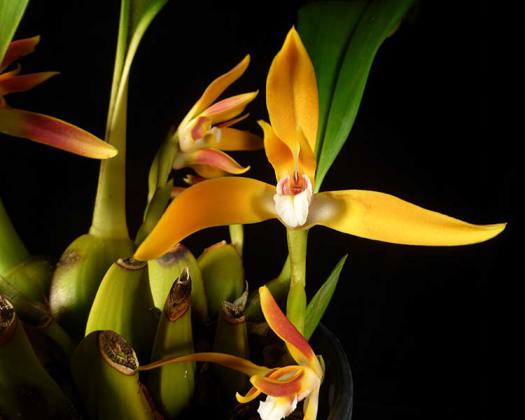
|
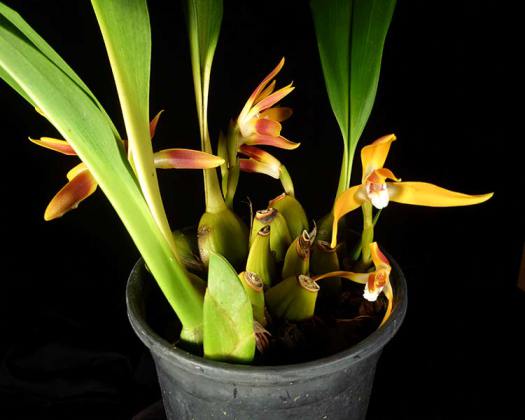 |
Maxillaria callichroma
Flowers have heavy substance, and are quite fragrant and long-lasting. |
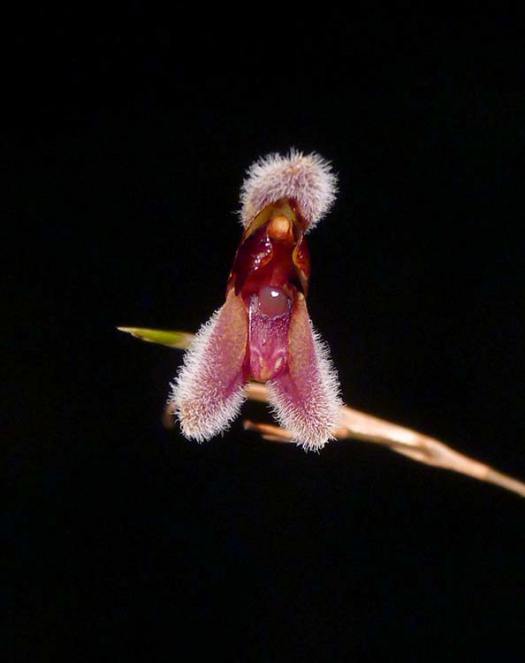
Condylago (Stelis) rodrigoi
1/4 inch flowers of this little pleurothallid are much easier to appreciate in a photograph than by visual examination. It is a somewhat sequential bloomer. |
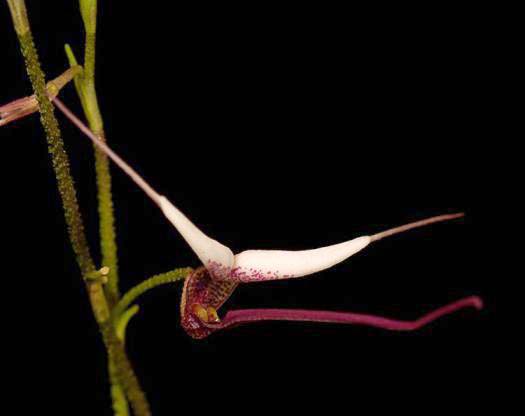
Scaphosepalum gibberosum
This is a sequential bloomer. A spike can produce flowers over a period of several years. I have found that at least on a small plant, once a spike is spent, it can be a year or two before another one is produced. This one is back in action. The flower is quite large for the genus. |
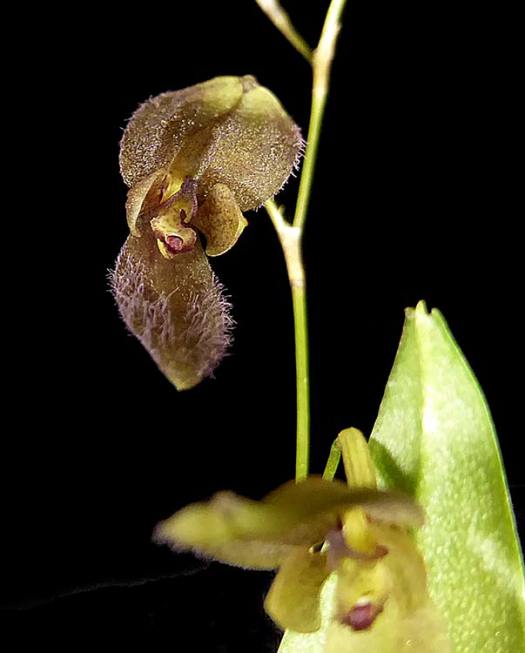
|
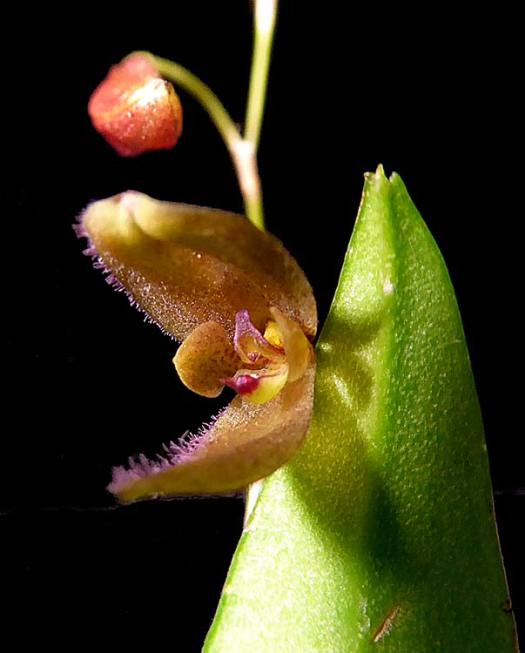 |
Stelis kefersteiniana
This is another little fuzzy one that is best appreciated in a photograph. Spikes are like very thin wires, producing just a few flowers at a time. |
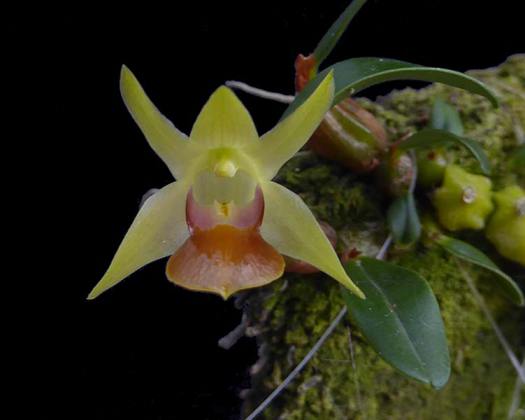 |
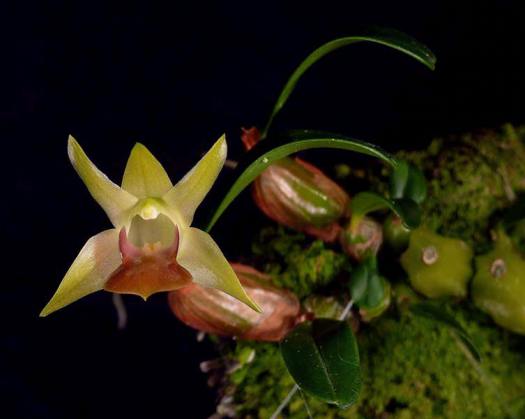 |
Epigeneium (Dendrobium) nakaharae
This species is a rambler. It climbed off its original mount, and then declined for several years on a new mount. It is putting out the best growth, as well flowering, on growths that are at the edge of the current mount. This one, and others of the genus Epigeneium (which may or may not be lumped into Dendrobium, jury is still out on this I think) seem to grow best with roots hanging freely in the air. I think I'll stop trying to tame this one, just see where it goes. |
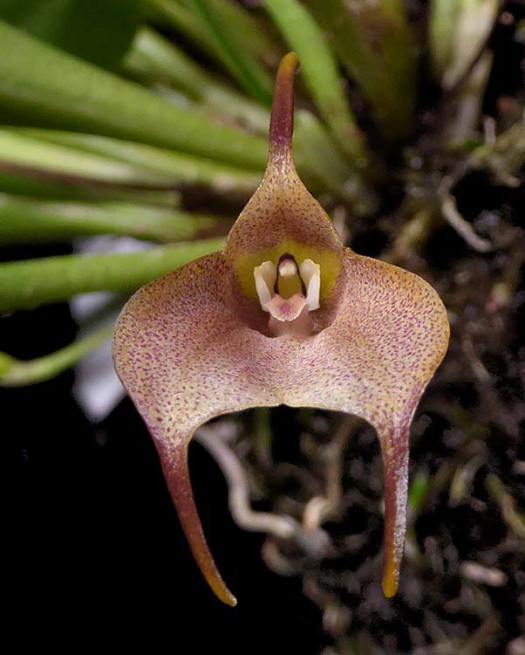
|
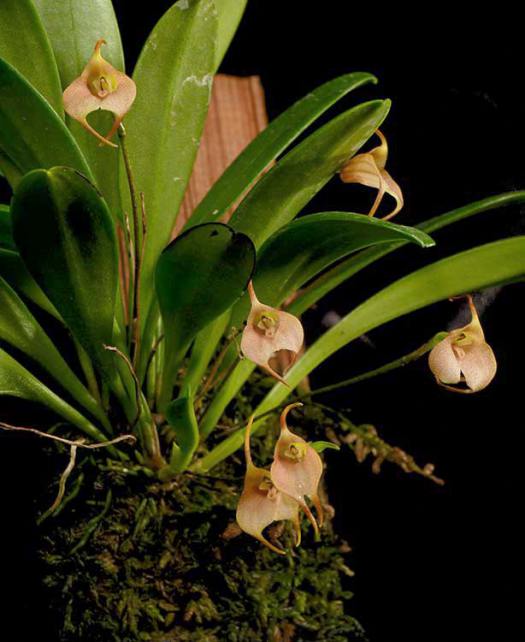 |
Masdevallia floribunda
This is one of the easiest Masdevallias to grow since it is fairly heat-tolerant. This is another one that got attacked by a "flying slug"... I laid it flat and put some Sluggo pellets on it for a few days (which placed vertically again they fell off) and that seems to have solved the problem. |
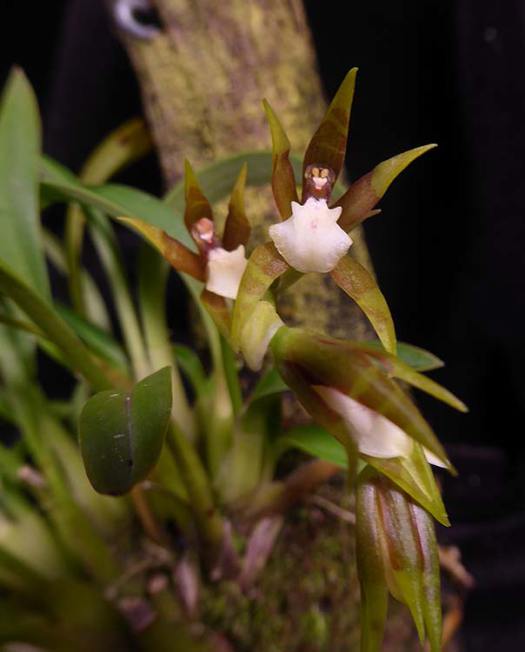
|
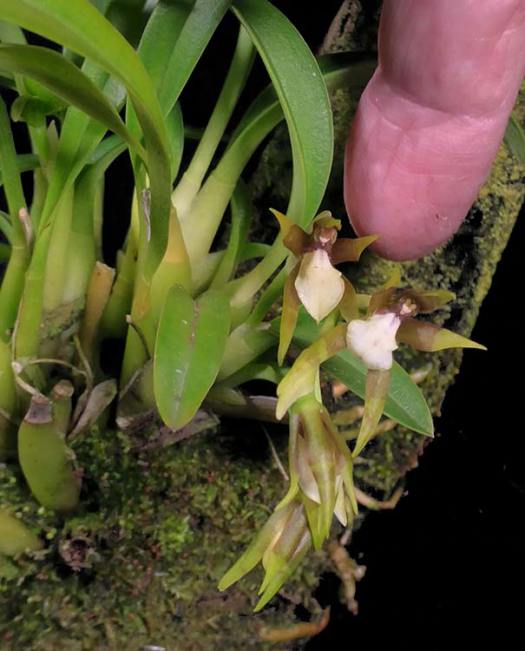
|
Ada (Brassia) brachypus
Love the spidery flowers of Brassia but don't have much room? Here's the perfect miniature version. It's very floriferous, and flowers are long-lasting. |
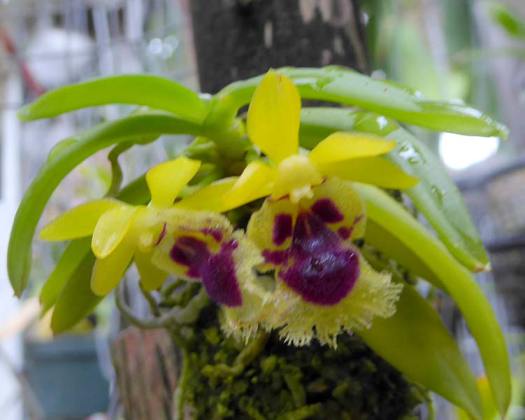
|
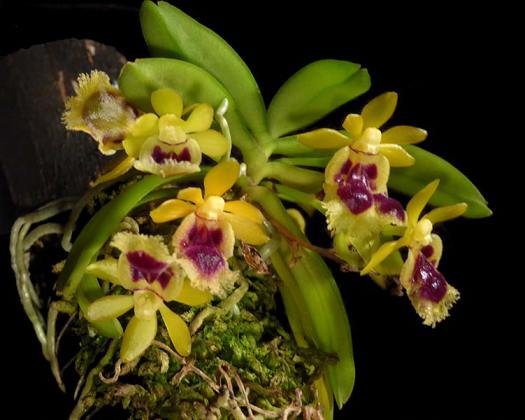
|
Haraella retrocalla
This is a very forgiving miniature orchid. The leaves are only about 1-1.5 inches so the flowers are nearly as big as the plant. It produces several spikes at a time, and blooms sequentially two or three times. Then a few months pass and it produces a new batch of spikes. It grows well outside, but could also grow nicely in a greenhouse or a terrarium. It is sweetly fragrant. |
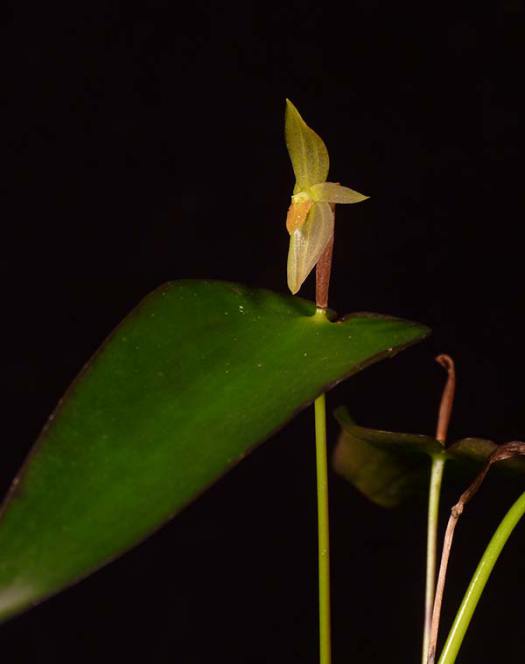 |
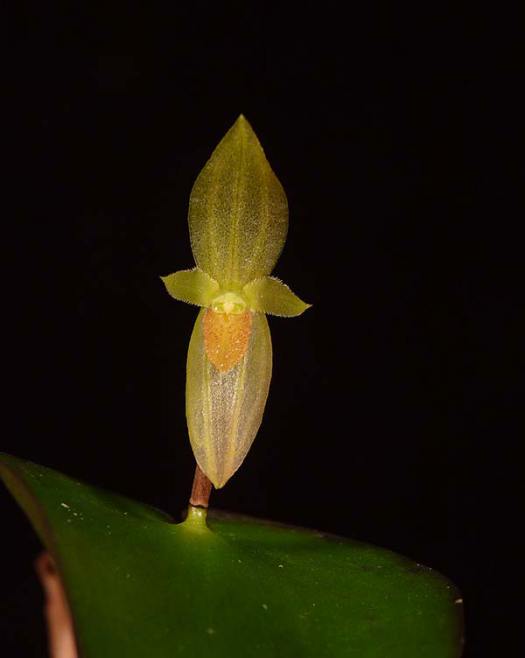 |
Pleurothallis radula
The inflorescence juts out perpendicular to the leaf, with a brown sheath. Then the flowers suddenly emerge. It can bloom more than once from a sheath. |
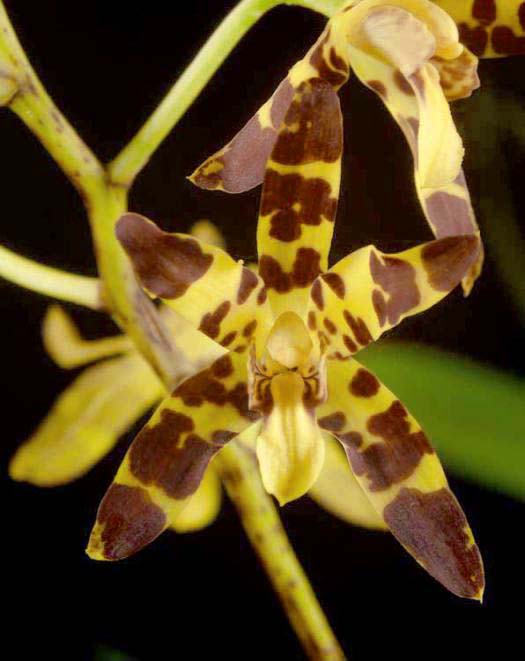 |
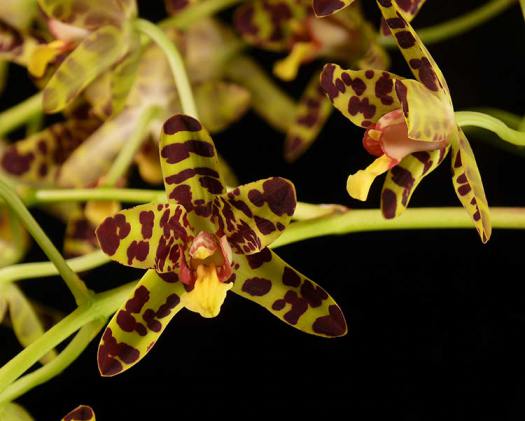
Ansellia africana
There is quite a bit of variation in the colors and patterns within this African species. I have found that it grows better in a hanging pot than on the bench, probably benefitting from better air movement. Some plants bloom two or three times a year, others mostly in spring. |
| |
|
In the greenhouse... |
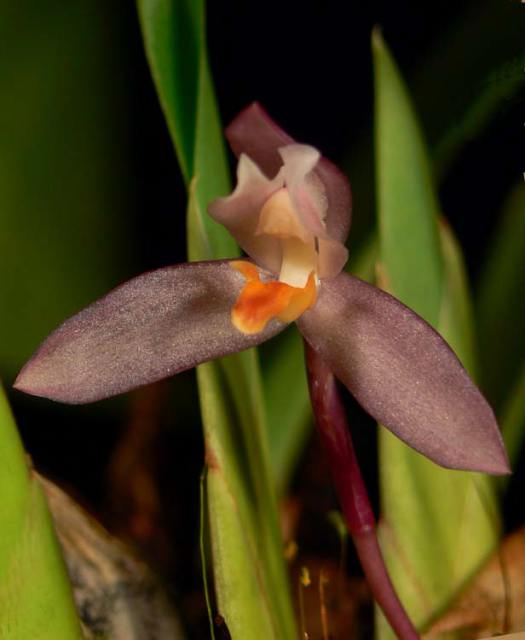
|
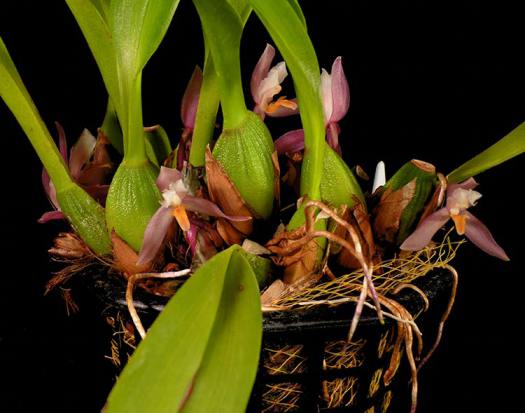
Maxillaria richii
This plant can bloom twice a year. It grows quite vigorously. I love the contrast between the yellow-orange lip and the dusty rose sepals. |
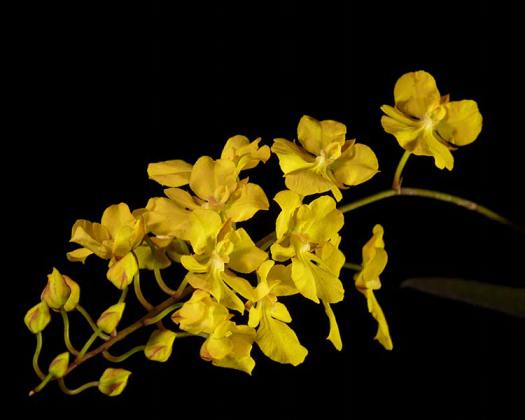
Zelenkoa (Oncidium) onustum
This might grow outside, but seems to prefer being a little warmer. It originates from dry coastal areas of Ecuador and Peru. In habitat, it grows on cactus and on trees in dry forest. Mounted with no moss, it is fine being watered with everything else, since it dries out very quickly.
|
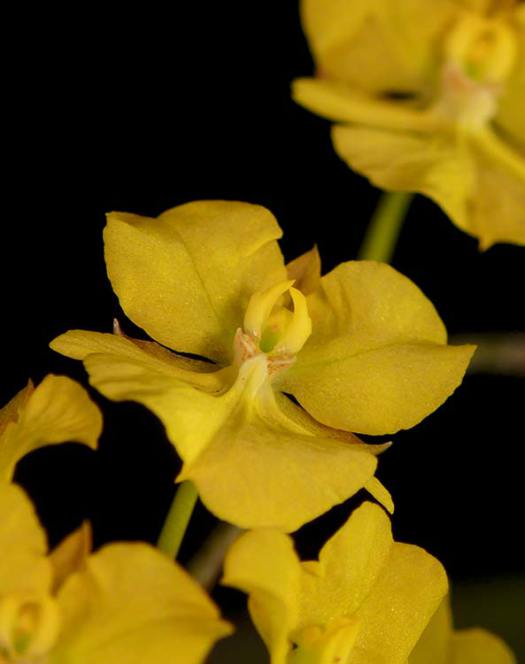 |
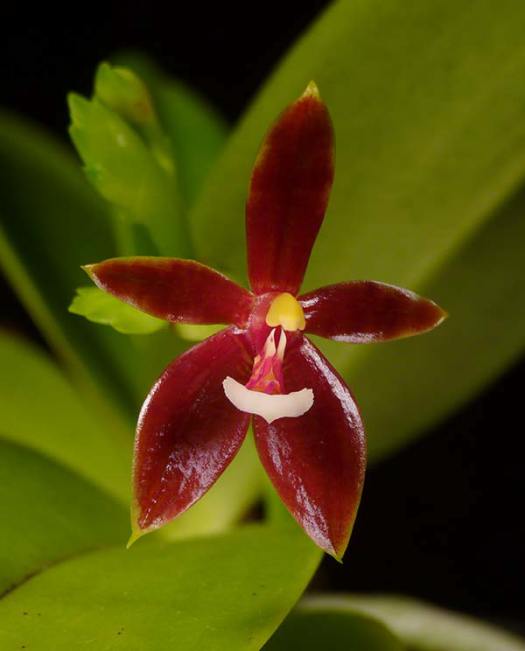 |
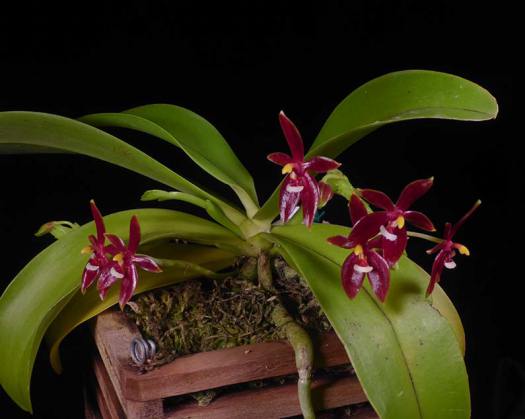
Phalaenopsis cornu-cervi f. chattaladae
This species has several color forms, from yellow to yellow with red-brown bars, to red. Each inflorescence can bloom many times. As old flowers drop, the inflorescence acquires an interesting "scalloped" appearance. |
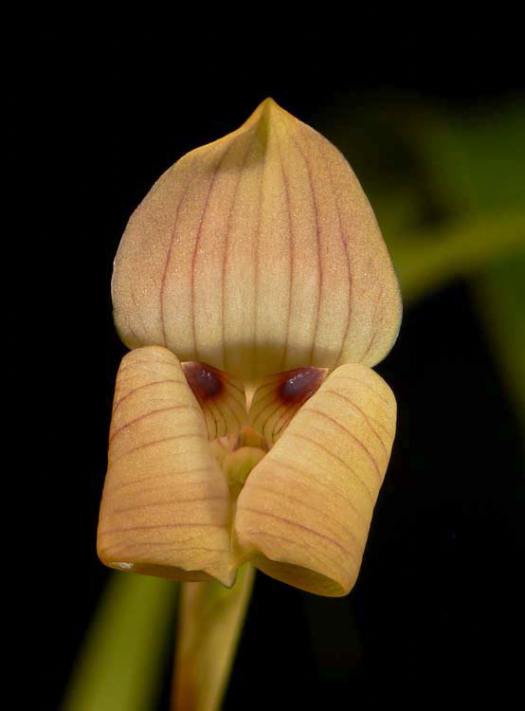
Trigonidium eggertonianum
These strange flowers grow top of approcimately 12 inch spikes, one per spike. The genus is a member of Maxillariae, related to Maxillaria and Zygopetalum |
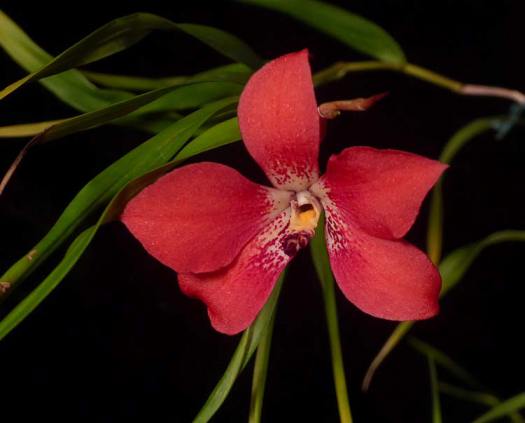
Dendrobium cinnabarinum
I have had this plant for about 6 months, and this is the first time it has bloomed for me. It blooms on older canes, so I have hope for many more of these brilliant flowers. (This flower appeared on the end of a cane that still has leaves, but had lost leaves at the tip where the flower developed.) |
